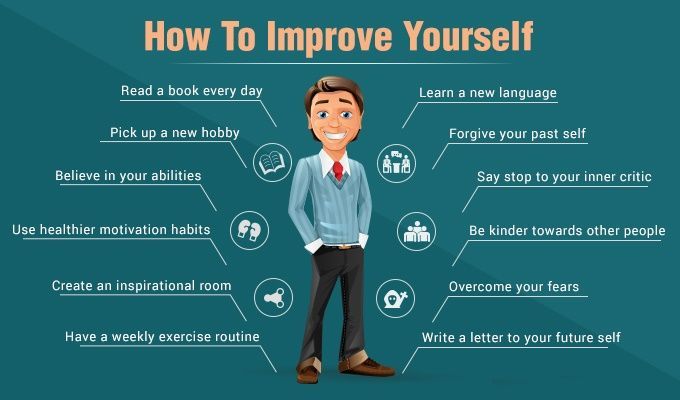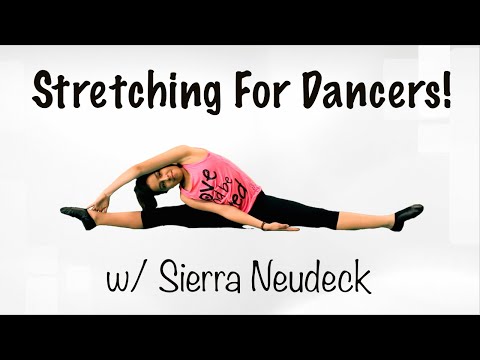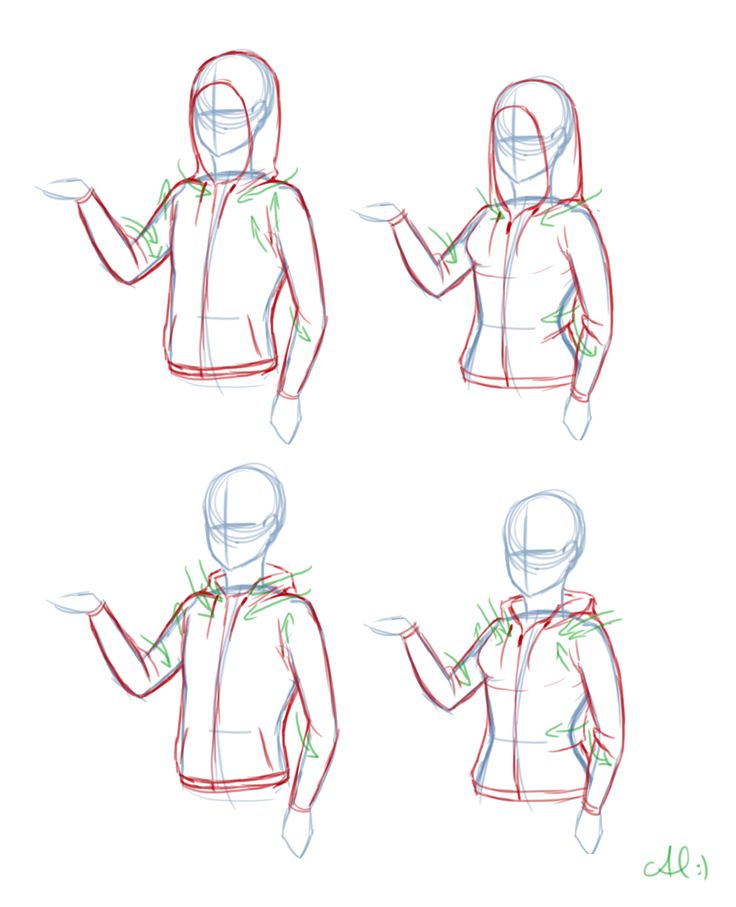How to get better pointed feet for dance
7 steps to a better arch — A Dancer's Life
Dream arches in the Energetiks Pivot 360 Tech Fit shoe
There are many things on every dancers wish-list; flexibility, musicality, a nice arabesque, fast allegro, long, elegant limbs (an insensitivity to pain maybe?!), but possibly the all-time most yearned after feature for any bun-head is a beautiful pointe.
Feet have been a crucial component to the aesthetics of dance ever since Marie Taglioni brazenly went to new heights by stepping 'en pointe' during that game-changing performance of La Sylphide in the seventeenth century. Since then dancers have aspired to elongate the line of the body as much as possible, and beautifully pointed feet with a high instep and pronounced arches isn’t just an extension of that line, it’s also a point of pride amongst dancers, and a testament to the incredible specialisation of a dancer’s body (no one is born with feet like Zakharova … not even Zakharova!).
There is still a large part of your capacity for pointe that is determined by genetics though. Not every dancer is going to be blessed with the ability to get rubber-like bendy feet. However that's not to say that you can't significantly enhance what you're born with. Through gently stretching the ligaments and strengthening the muscles over time, you can enhance the instep, arch, pointe, strength and flexibility of your feet and give yourself the very best pointe possible!
Here are our top tips for improving your pointe:
1. It's all about resistance.
Whether it's the resistance you create through the floor, or artificial resistance - such as with a thera-band or by wearing pointe shoes or demi pointes during class - the more your feet have to work through the demi-pointe and articulate all the way through the intrinsic muscles of the foot the better. Note: this is very different to 'forcing it. For example, when dancers get friends to sit on their feet for extended periods of time, or wedge their toes under hard surfaces and force their knees to straighten.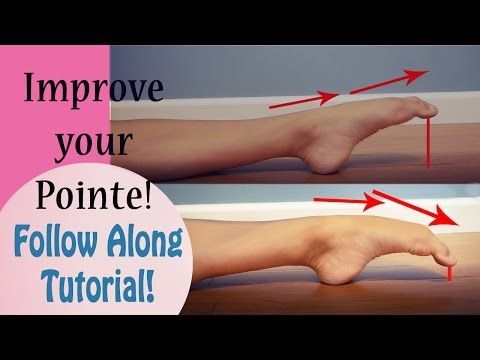 The logic behind this is that due to the excessive weight, this will increase your natural pointe flexibility. The truth is you can permanently damage ligaments by stretching them beyond their natural range of motion; which means rather than having better feet, you become weak and unstable on demi-pointe and pointe, and have reduced control over your feet. Always be gentle when stretching, it's much better to build up your range of movement gradually, rather than causing irreversible damage in one sitting. Be patient, it's worth it!
The logic behind this is that due to the excessive weight, this will increase your natural pointe flexibility. The truth is you can permanently damage ligaments by stretching them beyond their natural range of motion; which means rather than having better feet, you become weak and unstable on demi-pointe and pointe, and have reduced control over your feet. Always be gentle when stretching, it's much better to build up your range of movement gradually, rather than causing irreversible damage in one sitting. Be patient, it's worth it!
Check out the first few exercises in this helpful Thera-band tutorial for some great tips on resistance stretching for your feet.
2. Don't neglect the supporting leg.
Myth number #379 in dance: 'The working leg is the most important leg.' Now, I get the logic here, one leg is stationary and planted firmly on the ground whilst your other leg is precariously trying to execute seven impossible things at the same time, it's earned some favouritism, right? Well.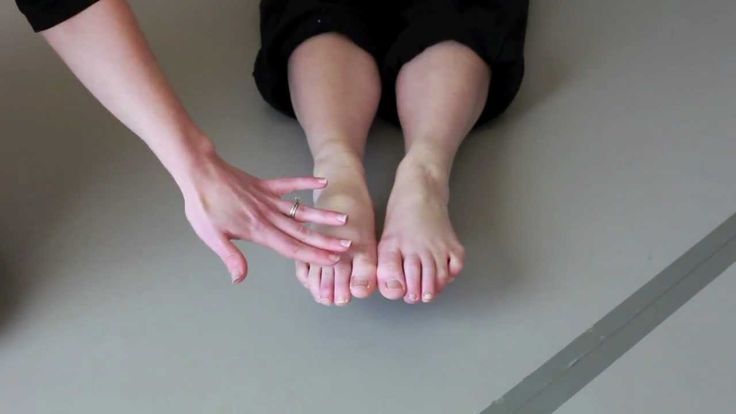 .. no. When working on our pointe, dancers tend to focus only on the working leg - however, it's often what you're doing in a 'relaxed' position that plays a crucial role.
.. no. When working on our pointe, dancers tend to focus only on the working leg - however, it's often what you're doing in a 'relaxed' position that plays a crucial role.
Whilst speaking on the topic of improving arches Vicki Negus, the West Australian Ballet’s resident physiotherapist notes: “[I]f you let your arch collapse when it is weight-bearing, all the bones of the arch have rolled in and will get strong in that rolled position. If you lift your arch when you are standing on it, you are strengthening it in the correct position.” The stronger you build these muscles and the rest of the foot's muscles, the greater control you'll have over the articulation of the foot and the shape of the extended pointe. So keep checking yourself in class and at home, even the worst foot-roller can (with enough determination) overcome their bad habits and make pulled up, engaged muscles a reflex just as natural as breathing.
3. Use your eccentric movements.

*Note: Not the same as the other kind of 'eccentric' ...although eccentric dancing can be fun too.
Every movement is made up of two stages. There's the concentric stage, which is the 'action' part of a move; for example the extension part of a tendu, or the 'sitting up' part of a sit-up. And then there's the eccentric part, which is when the muscles involved in the movement (that just contracted to allow the action to take place) must elongate again to return the body to it's resting state (ie. the closing portion of a tendu, and the laying-back-down part of a sit-up). The misconception is that muscles that are moving eccentricly can't really be 'worked', they're just passive - like when the leg is returning from a grand battement. However the energy and power it takes to lower the leg with control and replace it in the required fifth position takes an incredible amount of work, and taking advantage of this stage of each exercise will improve every aspect of your dancing to no end.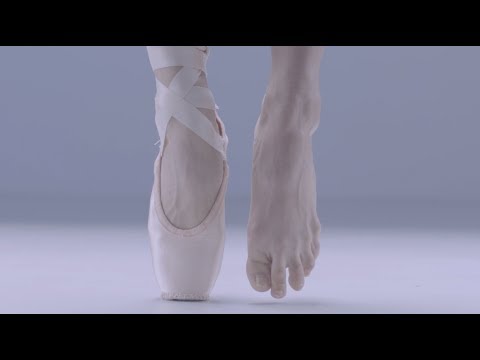 If you want to know just how much control you have of your body's eccentric movements try landing completely silently from a jump, it's eccentric control that allows you to land without a big 'thud', and it's the eccentric phase of a movement that is so crucial to building strength and control. Focusing on working the muscles of the foot through the eccentric stage of each exercise will give you much greater control and manipulation over your pointe.
If you want to know just how much control you have of your body's eccentric movements try landing completely silently from a jump, it's eccentric control that allows you to land without a big 'thud', and it's the eccentric phase of a movement that is so crucial to building strength and control. Focusing on working the muscles of the foot through the eccentric stage of each exercise will give you much greater control and manipulation over your pointe.
4. Fake it.
No this isn't us advocating getting 'arch implants' or anything crazy like that (that was a joke, but let's be honest it's probably a thing somewhere...). Short of actually breaking your feet, the best way to improve your articulation and enhance the instep is to 'fake' great articulation. Just think, if you had the MOST incredibly supple, bendy, fluid feet with incredible arches, you would take advantage of every single count of music and every développé to show them off, wouldn't you? From now on, when you're in class try visualising the exact feet you would like and maintaining that perception all through class - treat every exercise like a chance to show them off.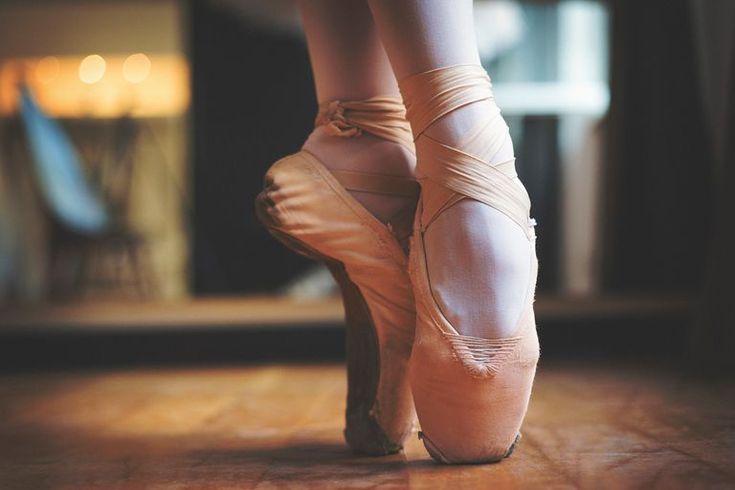 This way you'll be working through the feet as much as possible, which will have your feet getting stronger and more pliable in no time. Whilst at first this kind of concentrated focus might take a lot of effort, having the discipline to isolate your muscles like this will build muscle memory of the feel and routine of properly working and engaging your feet, and eventually proper articulation will become second nature.
This way you'll be working through the feet as much as possible, which will have your feet getting stronger and more pliable in no time. Whilst at first this kind of concentrated focus might take a lot of effort, having the discipline to isolate your muscles like this will build muscle memory of the feel and routine of properly working and engaging your feet, and eventually proper articulation will become second nature.
5. Expand your focus.
If you want to make significant improvements to your pointe, you can't just focus on the muscles in the feet, you want to build strength and stability in all the muscles that are involved in the process of plantar flexion (ie. 'pointing').
The muscles that should be focused on are these muscles of the posterior calf:
Source: http://images.slideplayer.com/14/4311227/slides/slide_15.jpg
Gastrocnemius
Soleus
Tibialis posterior
Flexor hallucis longus/brevis
Flexor digitorum longus/brevis
Peroneus longus/brevis
This stretching and strengthening exercise for feet and calves is a good way to work through these muscles in unison:
Calf raises through plié
With your feet in parallel, standing at the barre or near a table or chair for balance, bend into a demi plie keeping the knees directly over the toes.
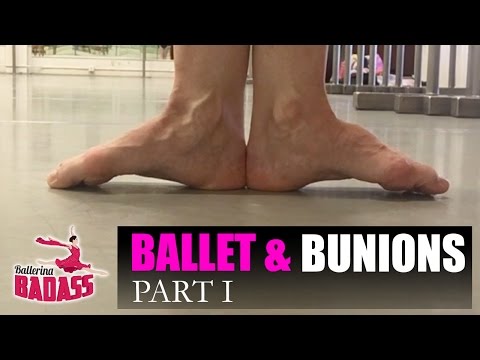
Whilst in the plie position, gradually lift your heels off the ground, rolling up through the intrinsic muscles of the foot and extending to your highest demi-pointe.
Keeping the heels as lifted as possible, straighten the knees so you’re standing in a turned in first position on demi pointe.
Now slowly lower the heels returning to a relaxed position. Repeat several times, then perform with the feet in first and second position.
Finally, repeat the whole process in reverse, starting with a rise onto demi-pointe, then gradually bending the knees to a demi plie-level, and (working the feet as much as possible) slowly lowering the heels, maintaining the plie, before finally straightening.
6. Consistency.
Giving yourself the most thorough foot workout is wonderful of course, but even the best stretching session isn't going to do you any good if you don't follow through.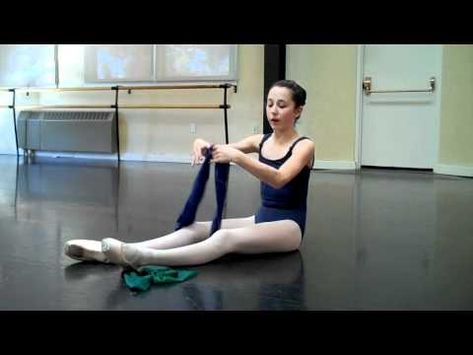 It's not enough to concentrate on your feet once a month, or once a week. If you really want to see improvements you've got to think about your feet each time you're in class and continue doing exercises and strengthening your feet and ankle muscles daily. The more consistent you can be with your habits the better the results you'll have.
It's not enough to concentrate on your feet once a month, or once a week. If you really want to see improvements you've got to think about your feet each time you're in class and continue doing exercises and strengthening your feet and ankle muscles daily. The more consistent you can be with your habits the better the results you'll have.
Also - Don't forget to balance out all this extra training, you need to ensure that an increase in muscle use doesn't lead to stiff, tight calves which will end up impeding your dancing. Here's a great video with some exercises to release your calves and activate the gluteal muscles to restore some balance to your training: Calf release and glute activation for dancers.
...And finally, our last tip:
7. Balance is key.
Always, always, always aim for a balance between strength and flexibility. It's so important to understand the complementary role these two play; there's no use being able to bend your toes to the floor if you can't hold them there without wedging your feet under the couch.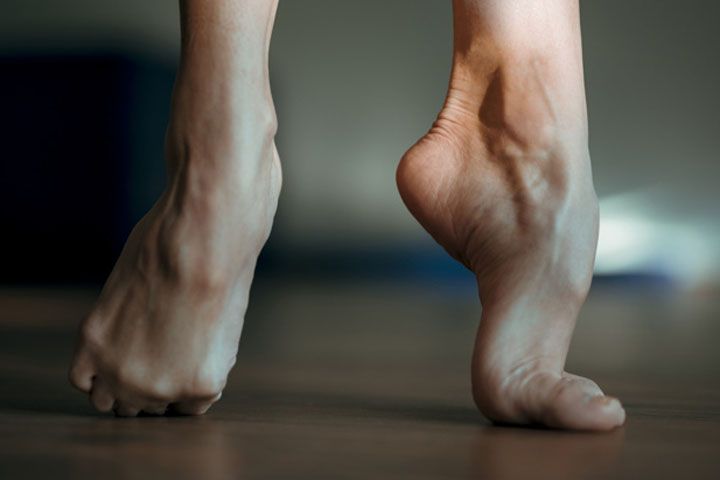 Just like there's no point being able to do splits if you don't have the muscles to lift and support the leg in a Penché. Flexibility is like a key, it gives you the potential to be able to do something specific. However it's strength that gives you the ability to execute that potential. The only way to really improve your feet, is if you have enough strength to control the additional pliancy you've gained through stretching.
Just like there's no point being able to do splits if you don't have the muscles to lift and support the leg in a Penché. Flexibility is like a key, it gives you the potential to be able to do something specific. However it's strength that gives you the ability to execute that potential. The only way to really improve your feet, is if you have enough strength to control the additional pliancy you've gained through stretching.
Slow, controlled rises through the demi pointe, first with both feet and then on a single supporting leg is a great exercise to incorporate into your warm-up. Remember to be just as conscious of your technique and control during the eccentric (lowering) part of the exercise.
So there you have it, we hope this advice has helped you not just improve your pointe, but to also understand how certain exercises benefit the body (as well as what things don't) so that you can make safe decisions with your dance training and avoid unnecessary injury. Keep practising and improving your range of movement and you can look forward to a whole new pointe.
Keep practising and improving your range of movement and you can look forward to a whole new pointe.
Happy dancing!
Need some help with your turnout too? We've got that sorted too. Here's everything you need to know to improve your turnout: Turning out better.
Article by Elly Ford
Read More:
6 Simple Exercises for Improving Ankle Strength
Rehearsal Ready: Simple Steps to Prepare Your Mind and Body
Pointe Shoe Care: Tips to Make Your Pointe Shoes Last
Dance Advice, Pointe info, Advice + Tips, Most PopularEnergetiksballet, dance tips, dance advice, arches, better feet, improving your feet, improving your pointe, getting better feetComment
0 Likes5 Ways to Improve Your Toe Point — School of the Arts
ColorguardDance
Written By Elizabeth Clayton
Written by: Kelly Laws and Samia Mooney.
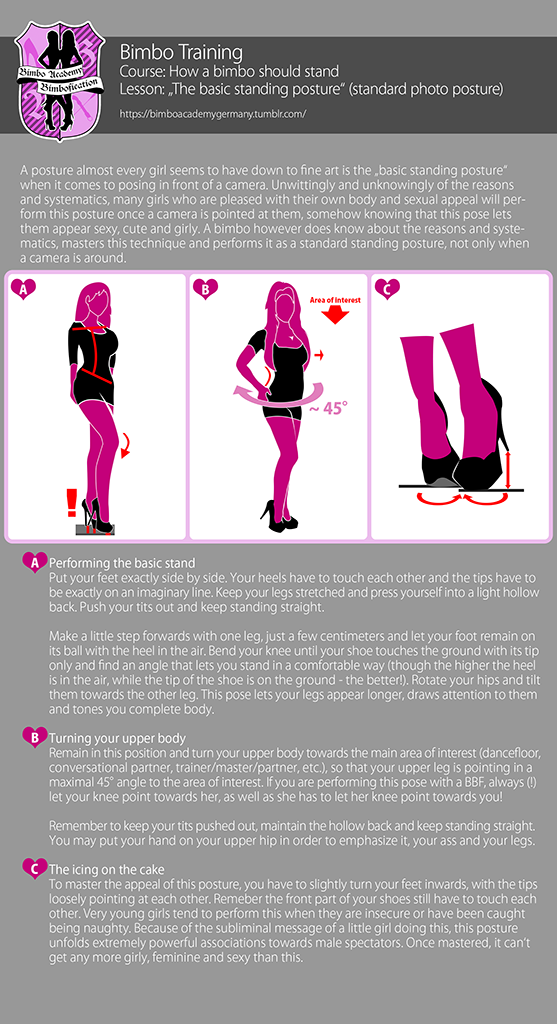
Your toe point, like any muscle in your body, can be stretched in order to increase your range of motion. Learning how to stretch and strengthen your toe point can be extremely helpful in colorguard as it is a part of almost any piece of choreography! Here are some helpful stretches and strengthening exercises that help us improve our toe point!
1. Towel Exercise:
Take a small hand towel and lay it flat on the floor. While seated, take your foot and place it flat on the towel with your knee bent. Practice trying to grab the towel by scrunching your toes towards your body. This will help with the articulation of your toes specifically and can be transferred to your toe point!
2. Theraband Exercises:
Therabands are great for helping you not only stretch muscles, but strengthen them at the same time! To stretch your toe point muscles, take a theraband and wrap it around the ball of your foot. While seated, gently pull both sides of the theraband toward your body.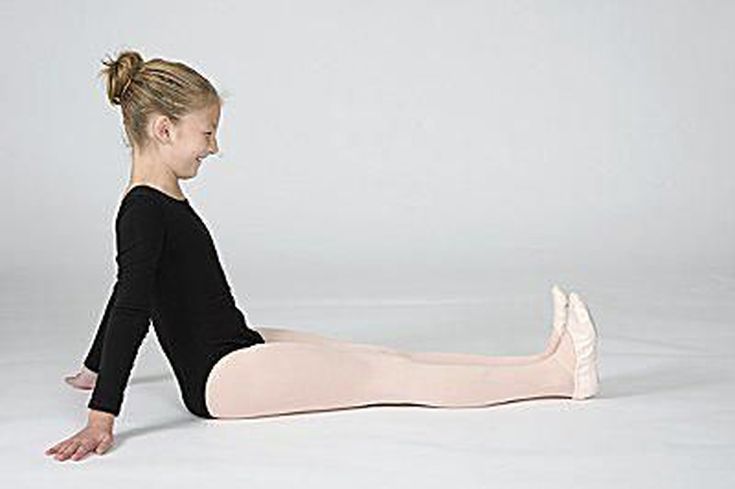 With this resistance, alternate between pointing and flexing your foot slowly and with control.
With this resistance, alternate between pointing and flexing your foot slowly and with control.
3. Exercise for the ligaments in the top of your foot:
While standing, cross one foot over the other foot while pointing and gently press it into the floor. For an even deeper stretch, take a small plie with the standing leg. This should stretch and lengthen the ligaments that run along the top of your foot!
4. Flex, Point, and Turnout Exercise:
While seated with your legs out in front of you, alternate between pointing in parallel, turning out with your point, flexing while turned out, and flexing parallel. This series of different positions will help stretch the muscles that help you point your foot and it will help with articulation through the different positions of your foot!
5. Calf Raises:
Calf raises are a great way to strengthen the muscles in your ankle! Your ankle is super important in being able to point your toes with your full range of motion, so it is very helpful to make sure they are strong.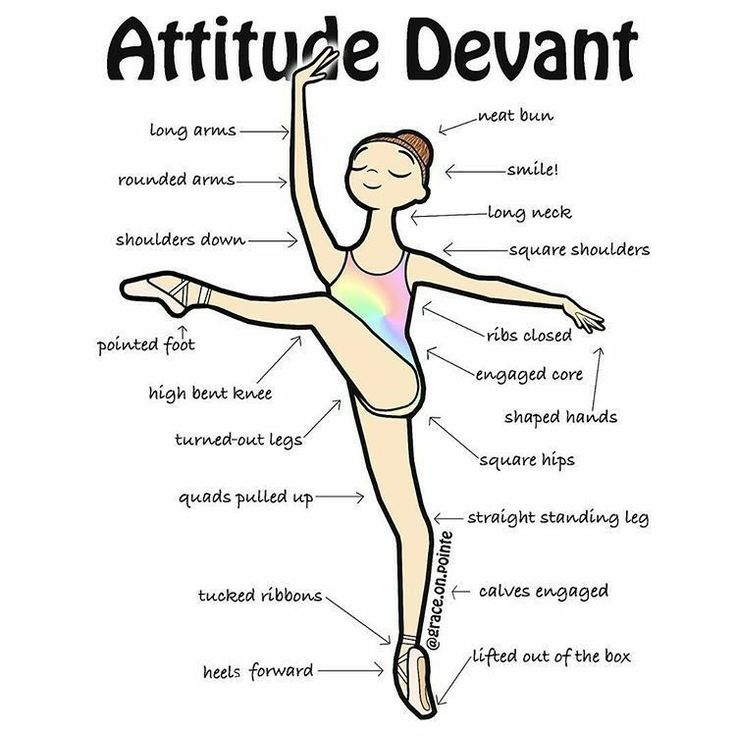 Stand with your feet in first position, and slowly raise into releve and back down to standing. Make sure that your knees are tracking over your toes and you are maintaining your turnout as you do these in order to protect your knees! Try doing 20 reps of calf raises 3 times with a small stretch in between, and then increase as you feel your calves and ankles getting stronger!
Stand with your feet in first position, and slowly raise into releve and back down to standing. Make sure that your knees are tracking over your toes and you are maintaining your turnout as you do these in order to protect your knees! Try doing 20 reps of calf raises 3 times with a small stretch in between, and then increase as you feel your calves and ankles getting stronger!
For more key information on foot positions and other dance fundamentals, check out Samia Mooney's dance course! The course is packed full of techniques and exercises to make you a better dancer! And it’s coming from a professional who knows what she’s talking about—Samia is the Director of Dance at Avon High School, the Movement Coordinator for the world-class Bluecoats Drum & Bugle Corps, and she has extensive experience as a professional dancer, including in the Tony Award winning production Blast!
ColorguardDance
Elizabeth Clayton
Dance, dance for yourself: 5 types of dance and their benefits for the body and mind
Health
© Shutterstock
March 22, 2019
If you are looking for a way to tone your body and mind, then dancing is the best solution.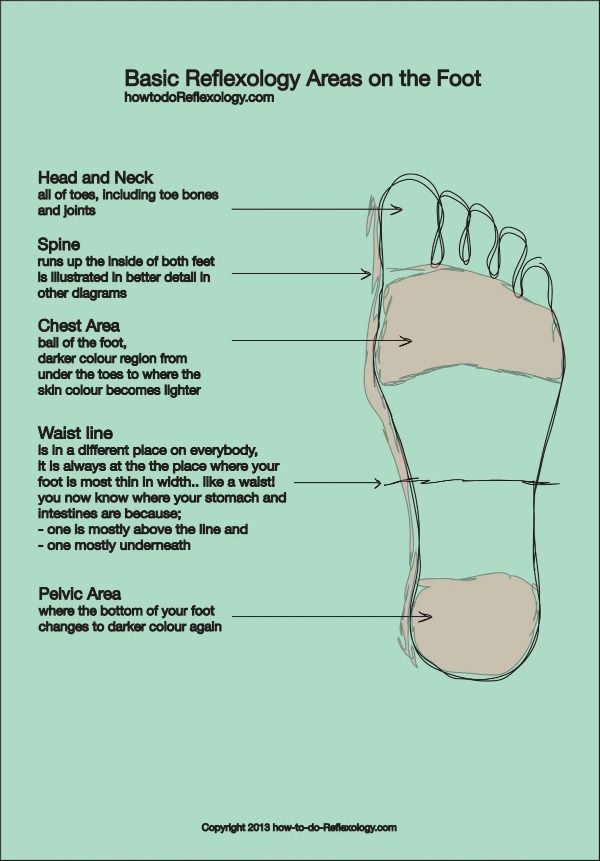 Pink talks about the benefits of dance classes through the lens of mental and physical health.
Pink talks about the benefits of dance classes through the lens of mental and physical health.
Dancing is a comfortable form of physical activity that requires work with your own weight and balance. Regular classes in any kind of dance help to normalize weight and strengthen the muscular frame.
Before each class, regardless of the chosen style, it is always necessary to warm up the body - a stage of easy and effective cardio. Only then can you begin to study dance movements and elements. At the end of any class, a moderate stretch is always performed. On average, one dance class burns from 200 to 1000 kilocalories, depending on the chosen style and individual training. Within a month after regular training, you can notice lightness and smoothness in movements, body tone, improvement in body endurance and posture.
In addition, dancing is an opportunity to relieve stress and stock up on resources to resist depression. During classes, a strong connection with your own body is established. Due to self-expression through movements to music, energy is unlocked, liberated from physical and psychological clamps. At the same time, dances always take place in rooms with mirrors, which also helps to build contact with our body, because during the day we rarely see ourselves from the outside. All this allows you to truly feel your body, accept it and be with it in one moment. And of course, any dance is an additional self-confidence.
Due to self-expression through movements to music, energy is unlocked, liberated from physical and psychological clamps. At the same time, dances always take place in rooms with mirrors, which also helps to build contact with our body, because during the day we rarely see ourselves from the outside. All this allows you to truly feel your body, accept it and be with it in one moment. And of course, any dance is an additional self-confidence.
Advertising on RBC www.adv.rbc.ru
A direction that combines modern and postmodern dance techniques, as well as yoga, oriental body practices and martial arts. Contempo allows you to reassemble and feel your body - a mixture of Western and Eastern traditions requires balance, proper breathing, feeling all the muscles. During training, emphasis is placed on the work of the joints, building posture, establishing connections between the center of the body and the limbs. All this is called the process of body awareness, which allows you to coordinate both body and mind.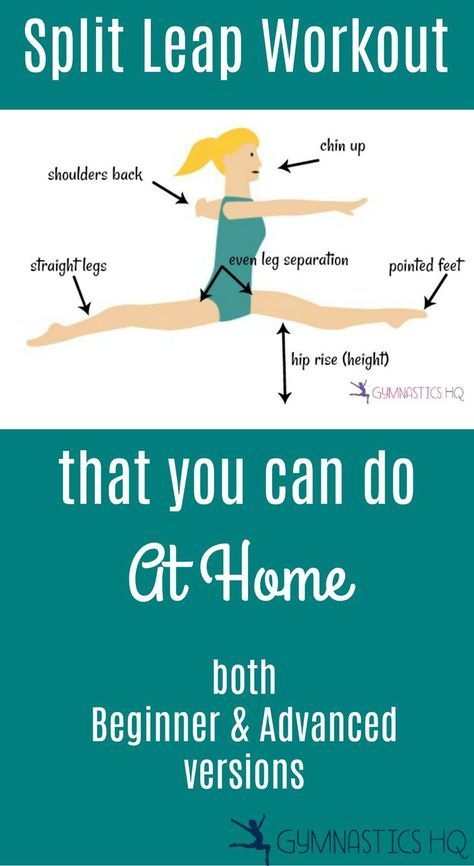
This direction requires the involvement of all muscle groups and coordination. Therefore, the effectiveness of tango can be compared with aerobics or fitness. Also, this dance is considered one of the most social - tango cannot be danced alone. During classes, you need to feel a partner and trust him. This helps to solve problems with increased control and inability to relax. By the way, scientists from the Montreal Neurological Institute found that tango helps with Parkinson's disease.
View this post on Instagram
One of the most popular dances of recent years, which most of the famous trainers learned on their own from the clips of their favorite performers. Smooth and rhythmic movements of the pelvis allow you to pump up not only the buttocks and lower back, but also all muscle groups of the legs.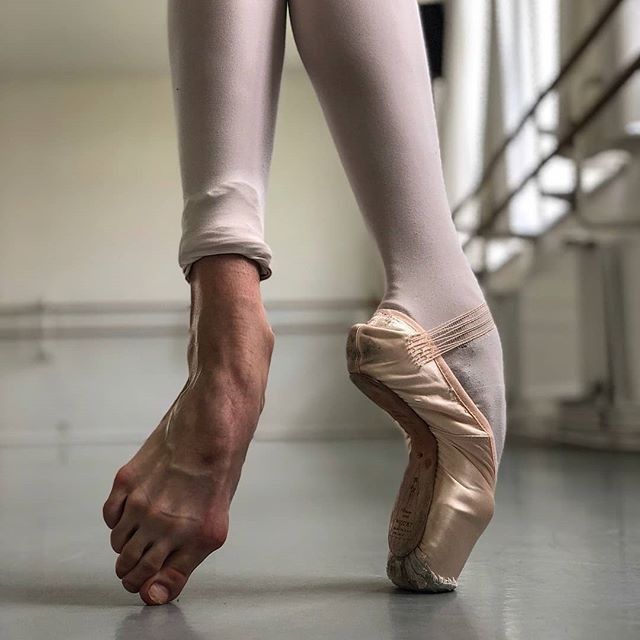 Also, twerking is a great direction for pumping intimate muscles, which are responsible for the colorful orgasms that help us feel better.
Also, twerking is a great direction for pumping intimate muscles, which are responsible for the colorful orgasms that help us feel better.
View this post on Instagram
This dance style was very popular during the heyday of nightlife in the 2000s. Now pole dance is a dance that allows you to literally replace the gym and stretching. During classes, all muscle groups work - from the arms, which need to hold your body on the pole, to the legs, the smoothness and strength of which is required for easy sliding along the pole. Yes, this dance requires serious physical training and success can be expected for several months, but each new skill builds self-confidence.
This dance is again becoming one of the most relevant. A huge number of men and women around the world dream of learning how to dance like Madonna in a Vogue video - hence so many video tutorials on YouTube and Instagram. The main emphasis of this dance style is active work with hands. Therefore, it is required to develop the flexibility of the arms and hands on a daily basis, which, by the way, has a positive effect on the functioning of the lymphatic system. Also, vogue is the type of dance that is more built on self-expression and a personal sense of music. All this develops a strong contact with the body and a phenomenal fluidity of movement.
A huge number of men and women around the world dream of learning how to dance like Madonna in a Vogue video - hence so many video tutorials on YouTube and Instagram. The main emphasis of this dance style is active work with hands. Therefore, it is required to develop the flexibility of the arms and hands on a daily basis, which, by the way, has a positive effect on the functioning of the lymphatic system. Also, vogue is the type of dance that is more built on self-expression and a personal sense of music. All this develops a strong contact with the body and a phenomenal fluidity of movement.
5 tips to make progress in dancing
Is it possible to quickly improve your dancing skills with a few simple and effective steps? Yes! Read our tips to improve your dance technique.
Whether you're a beginner or an experienced dancer, whether you're into ballet, modern jazz, hip hop, or any other style, these 5 tips will help you reach your peak.
Would you like to change your dance costume while keeping the same clothes? This can be done with a single accessory or piece of clothing - a favorite item that can be worn in many ways.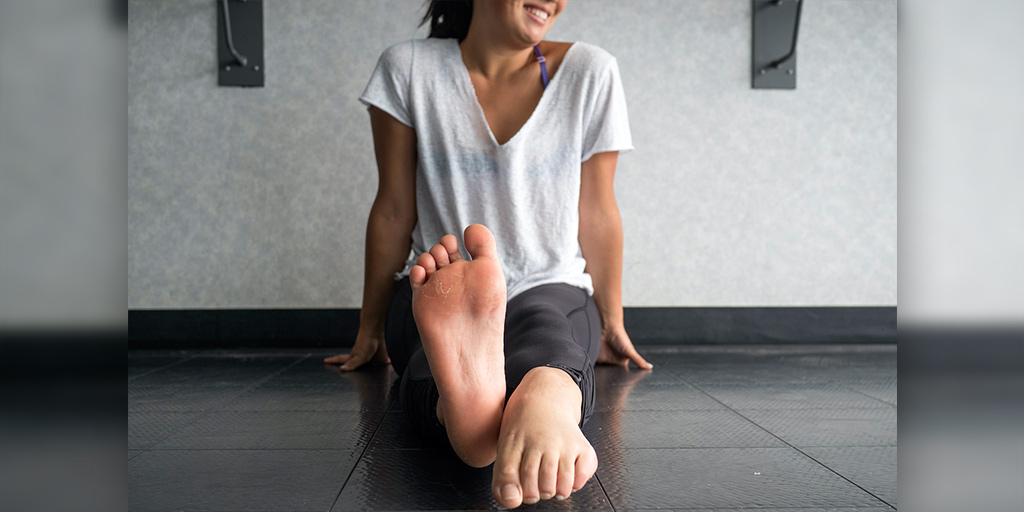
Depending on your style of dancing or how you feel at the moment, you can wear this piece however you want right now to give yourself a whole new look.
Your dancewear is part of your expression, so get creative by choosing an outfit that reflects your personality. Mix styles and develop your creativity.
What dancer has not had difficulty maintaining balance during the batman retreat or when performing a pirouette without a somersault?
To keep a good balance, remember this: when you move into a half-pointe position, automatically think about getting taller, as if someone is pulling you up. Press down on the ground with the foot that touches the floor to keep a firm footing. Also pay attention to the muscles of the core: tighten the stomach, imagining that the navel should touch the spine, and tighten the gluteal muscles.
Dancing is not always easy to gracefully express yourself and see your body moving smoothly and elegantly. However, viewers often pay attention to the upper half of the dancer's body. To become more graceful, try to move in a relaxed way and keep a natural expression on your face. No one should notice the slightest sign of effort in your eyes!
However, viewers often pay attention to the upper half of the dancer's body. To become more graceful, try to move in a relaxed way and keep a natural expression on your face. No one should notice the slightest sign of effort in your eyes!
Free your head and let it move, don't tense up. Do not spread or close your fingers as if you are holding something. A good dancer should have "light" hands. Your fingers should be controlled but relaxed (imagine water dripping from your fingertips and focus on the sensation).
Watch how you hold your hand: from the shoulder blades to the very nails. Keep your elbow from "falling" by taking care to support your wrist. Good support and resistance will help you shape curves that are smooth and elegant!
Flexibility is not required in dance, but it remains a highly sought-after characteristic for many dancers nonetheless. If it is not an innate trait, it can be developed gradually, with patience and care, given the capabilities of your body.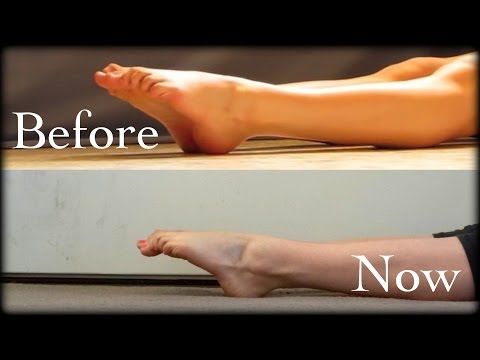
To make your body more flexible, we recommend a special exercise - splits . It is recommended to perform it only under the supervision of trainer ! Find a trainer at All Do Sport to train efficiently and safely.
First, warm up for 10 minutes, alternating several basic exercises. Sit on the floor with your legs together in a butterfly position and do a few rolls on your back. Then warm up your legs with a few exercises, do a series of jumps and a few deep lunges, and move on to the next:
- Execution: lie on your back and put your feet on the wall. Use your hands to move as close to the wall as possible. Touch the wall with your buttocks. Straighten your legs up and stretch your toes, keeping your feet and knees together. Legs and buttocks should rest on the wall. Start slowly spreading your legs apart. Lower them down to the most extreme position. Fix this position and try to relax, allowing gravity to push your legs towards the floor.
 Lightly press your hands on your feet. Gradually open your legs wider and wider, stretching your muscles.
Lightly press your hands on your feet. Gradually open your legs wider and wider, stretching your muscles. - Breathing: inhale deeply and exhale slowly throughout the exercise to relax and oxygenate your muscles. This will gradually help your body become more flexible.
- Safety tips: make sure you keep your buttocks firmly against the wall and your back against the floor throughout the exercise. Pull in your stomach and lower your legs as low as possible, but not with force!
Do this exercise once every 15 minutes.
If you are already flexible enough, put on ankle weights such as Gym Weight Domyos. They will increase muscle tension and add extra inches to your stretch!
Before the performance, it is important to take time for yourself and relax. Every dancer has their own set of tips for overcoming fear on stage. Do you want to know the proven way? Learn to relax through conscious and deep belly breathing.


